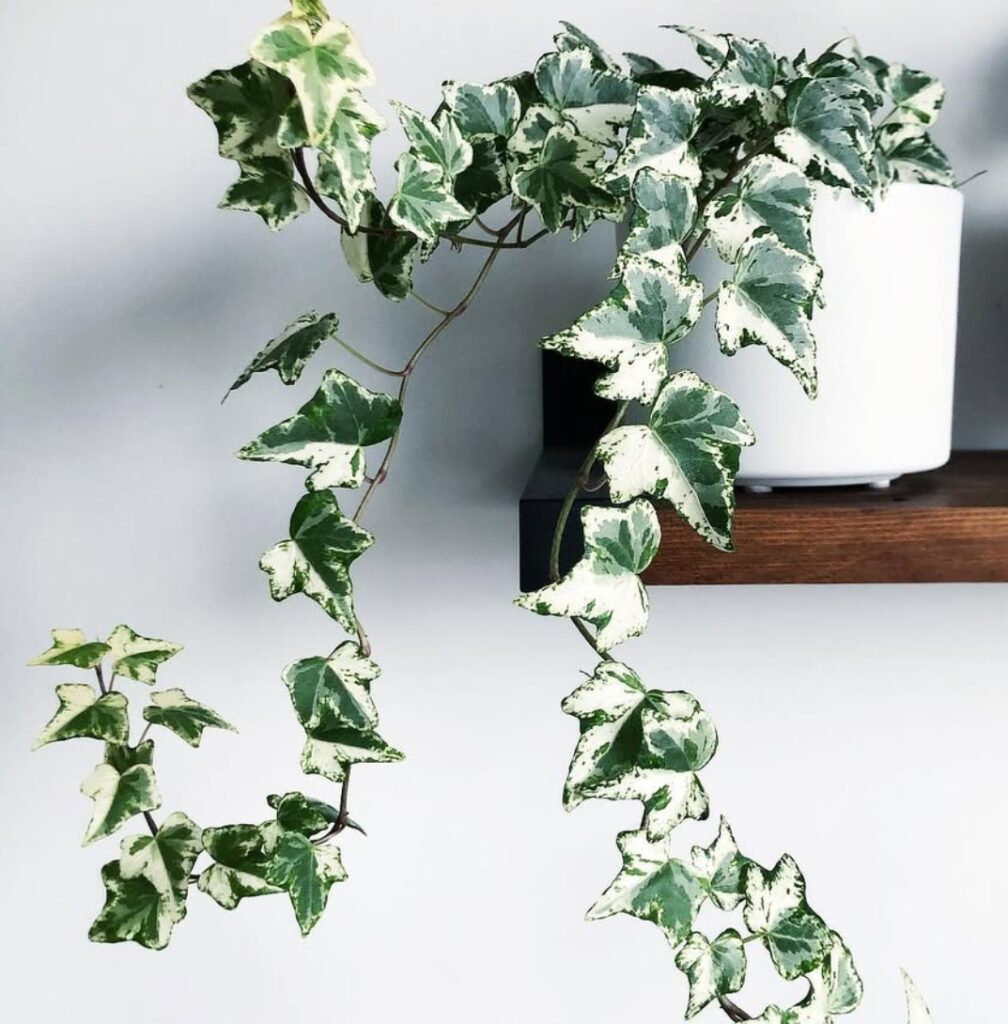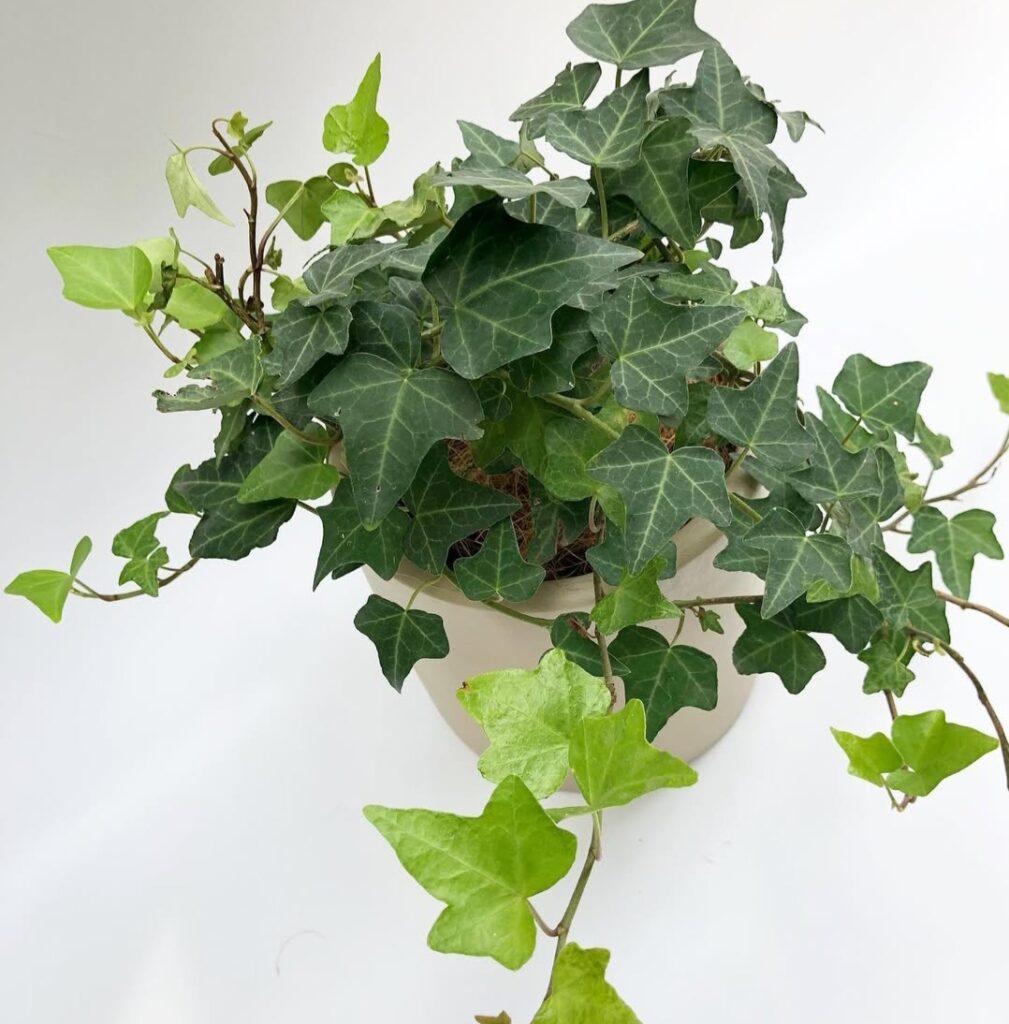
English Ivy (Hedera helix) is one of the most popular houseplants, known for its elegant trailing vines and ability to adapt to different environments. Whether grown indoors in hanging baskets or outdoors as a lush ground cover, it adds a touch of greenery to any space. Apart from its aesthetic appeal, English Ivy is also known for its air-purifying properties, making it an excellent choice for improving indoor air quality.
However, while it is a low-maintenance plant, achieving thick, vibrant, and healthy growth requires proper care. Many people struggle with issues like yellowing leaves, leggy vines, or pest infestations simply because they don’t understand the plant’s basic needs. In this guide, we’ll walk you through 10 proven care tips to help you grow a thriving English Ivy, whether you’re a beginner or an experienced plant parent.
- 1 English Ivy Growing in Hanging Baskets: Common Problems & Solutions
- 2 Temperature is another key factor.
- 3 Selecting the Right Soil
- 4 Watering Techniques
- 5 Proper Fertilization
- 6 Pruning for Fuller Growth
- 7 Controlling Pests and Diseases
- 8 Repotting and Propagation
- 9 Handling Toxicity & Safety Concerns
- 10 Seasonal Care Tips
- 11 FAQS

English Ivy is highly adaptable, but providing the ideal growing environment will significantly improve its health and appearance. The most important factor is light. Indoors, it thrives in bright, indirect light, such as near a window with sheer curtains. While it can tolerate low light, its growth may become slower, and the leaves may lose their vibrant color. If growing outdoors, it does best in partial to full shade, as too much direct sun can scorch the leaves.
English Ivy Growing in Hanging Baskets: Common Problems & Solutions
When growing English ivy (Hedera helix) in a hanging basket, you might encounter several common problems. Here are the issues and their solutions:
Leggy Growth and Sparse Foliage
Problem: The plant grows long vines with fewer leaves, making it look thin and scraggly.
Solution:
Prune regularly to encourage bushier growth.
Indirect, strong light is ideal for promoting healthy foliage. During the growing season, apply a balanced liquid fertiliser once a month.
Yellowing Leaves
Problem: Leaves turn yellow and drop, often due to overwatering.
Solution:
In between irrigations, let the soil dry up a little.
Ensure the basket has proper drainage.
Avoid soggy soil by using a well-draining potting mix.
Wilting or Drying Leaves
Problem: Leaves become dry, brown, or crispy, usually due to underwatering or low humidity.
Solution:
When the top inch of soil seems dry, water. Place a humidity tray next to the plant or mist it occasionally. The leaves may be scorched if the basket is placed in direct sunlight.
Pests (Spider Mites, Aphids, or Mealybugs)
Problem: Tiny pests suck the sap from leaves, causing yellow spots or webbing.
Solution:
Inspect regularly and wash leaves with soapy water.
Use neem oil or insecticidal soap if pests persist.
Improve air circulation to prevent infestations.
Root Rot
Problem: The roots become mushy and the plant wilts despite moist soil, often due to poor drainage.
Solution:
Ensure the hanging basket has drainage holes.
Use a lightweight, well-draining soil mix.
Water only when needed to prevent excess moisture buildup.
Slow Growth
Problem: The ivy grows very slowly or stops growing altogether.
Solution:
Transfer the plant to an area with indirect light that is brighter.
Feed with diluted liquid fertilizer every 4–6 weeks.
Repot if the plant is root-bound, using fresh soil.
Would you like any specific care tips based on your environment?
Temperature is another key factor.
English Ivy prefers a temperature range of 50–70°F (10–21°C). It does not do well in extreme heat or cold, so avoid placing it near heating vents, radiators, or drafty windows. Additionally, this plant loves humidity. If the air is too dry, especially indoors during winter, misting the leaves occasionally or placing a humidity tray nearby can prevent them from drying out.
Selecting the Right Soil
Soil quality is crucial for English Ivy’s overall health. It prefers well-draining, loose, and airy soil that retains some moisture but does not become soggy. A good potting mix should include a combination of:
General-purpose potting soil (rich in organic matter)
Sand or perlite (to enhance aeration and drainage)
Peat moss or coco coir (to retain necessary moisture)
The soil’s pH should be slightly acidic to neutral (6.0–7.5). Avoid using heavy, compacted soil, as it can lead to root rot by trapping too much water around the roots.
Watering Techniques
One of the most common mistakes people make with English Ivy is overwatering. Although it enjoys consistently moist soil, it should never be waterlogged, as this can lead to root rot. When the top inch of soil feels dry, it’s a good idea to water.
If the leaves start turning yellow and mushy, you’re likely overwatering. On the other hand, if they become crispy and brown at the edges, your plant is too dry. Adjust your watering schedule based on the season—watering more frequently in summer when the soil dries out faster and reducing it during winter when the plant’s growth slows down.
To prevent issues, consider bottom watering by placing the pot in a tray of water for a few minutes. This method allows the roots to absorb moisture without the risk of overwatering.
Proper Fertilization
While English Ivy is not a heavy feeder, occasional fertilizing will promote lush, green growth. A balanced liquid fertilizer (such as 10-10-10 or 20-20-20) works well when diluted to half-strength. Apply fertilizer once a month during the growing season (spring and summer) to encourage new growth.
However, avoid over-fertilizing, as it can lead to salt buildup in the soil, which may cause leaf burn. During fall and winter, when growth naturally slows, reduce or stop fertilizing altogether. If you prefer organic options, compost tea, fish emulsion, or worm castings can be excellent natural fertilizers for English Ivy.
Pruning for Fuller Growth
Pruning is essential for keeping English Ivy full, bushy, and healthy. Without regular trimming, the vines can become leggy and sparse, especially if they are not receiving enough light.
To encourage fuller growth, prune the plant every few months, cutting back long or straggly vines just above a leaf node. This will stimulate the growth of new shoots, making the plant look denser and more attractive. Also, remove dead, yellowing, or damaged leaves regularly to maintain its overall health.
If your ivy is growing up a trellis or wall, you can shape it by gently guiding and trimming the vines to prevent it from becoming too wild.
Controlling Pests and Diseases
English Ivy is generally hardy, but it is still susceptible to pests and fungal diseases if not cared for properly. Some common pests include:
Spider mites – Cause webbing and tiny yellow specks on leaves.
Aphids – Small insects that cluster on new growth and suck sap from the plant.
Mealybugs – White, cotton-like pests that weaken the plant.
To treat infestations, wipe leaves with insecticidal soap or neem oil, and ensure proper air circulation. If the infestation is severe, consider using a diluted rubbing alcohol solution to remove pests manually.
Fungal infections like root rot or leaf spot can occur due to excess moisture. Prevent these by avoiding overhead watering and ensuring the soil drains well.
Repotting and Propagation
Repotting is necessary when the plant outgrows its pot or if the soil becomes compacted. Signs that your ivy needs repotting include roots growing out of drainage holes, slowed growth, and soil drying out too quickly.
Repot every 1–2 years into a container 1–2 inches larger.
To add fresh nutrients, use fresh potting soil.
Propagation: If you want to grow more ivy, stem cuttings are the easiest way to propagate. Simply:
Cut a 4–6 inch section of a healthy vine.
After removing the bottom leaves, submerge the cutting in damp soil or water.
Roots should develop within 2–3 weeks, after which the new plant can be potted.
Supporting Growth (Trellises & Hanging Baskets)
English Ivy isi a natural climber and can be trained to grow on trellises, moss poles, or walls. If you prefer a cascading look, planting it in hanging baskets allows the vines to drape beautifully.
To guide its growth, use soft plant ties or hooks to secure vines in place. Regularly adjusting their direction will help shape the plant as desired.
Handling Toxicity & Safety Concerns
While English Ivy is an attractive plant, it is toxic if ingested by pets and humans. The leaves contain compounds that can cause digestive distress, nausea, and skin irritation. If you have pets, place the plant out of their reach, or consider safer alternatives like Boston Fern or Spider Plant.
Seasonal Care Tips
English Ivy requires different care depending on the season:
Spring & Summer: Increase watering and fertilizing as growth becomes active.
Fall & Winter: Reduce watering and stop fertilizing to match slower growth.
Outdoor Ivy in Winter: In colder regions, apply mulch around the roots to protect against frost.
If growing indoors, keep the plant away from heaters and dry air, as low humidity can cause leaf drop.
English Ivy is an incredibly rewarding plant that thrives with minimal care when given the right conditions. By following these 10 proven tips, you can ensure healthy, vibrant growth and enjoy its beauty year-round.
FAQS
How do you make English Ivy lllgrow faster?
Provide bright, indirect light, fertilize monthly, and prune regularly to encourage new growth. Keeping humidity levels high also helps.
Can English Ivy be grown in hanging baskets?
Yes, English Ivy looks great in hanging baskets. Use well-draining soil, water properly, and trim long vines to keep it full and bushy.
Can English Ivy survive winter outdoors?
Yes, English Ivy is hardy and can survive winter outdoors in most climates. However, in very cold regions, it may lose some leaves but regrow in spring.
Why are my English Ivy leaves turning brown?
Brown leaves are often caused by low humidity, dry soil, or excessive direct sunlight. Increase humidity and adjust watering habits.







